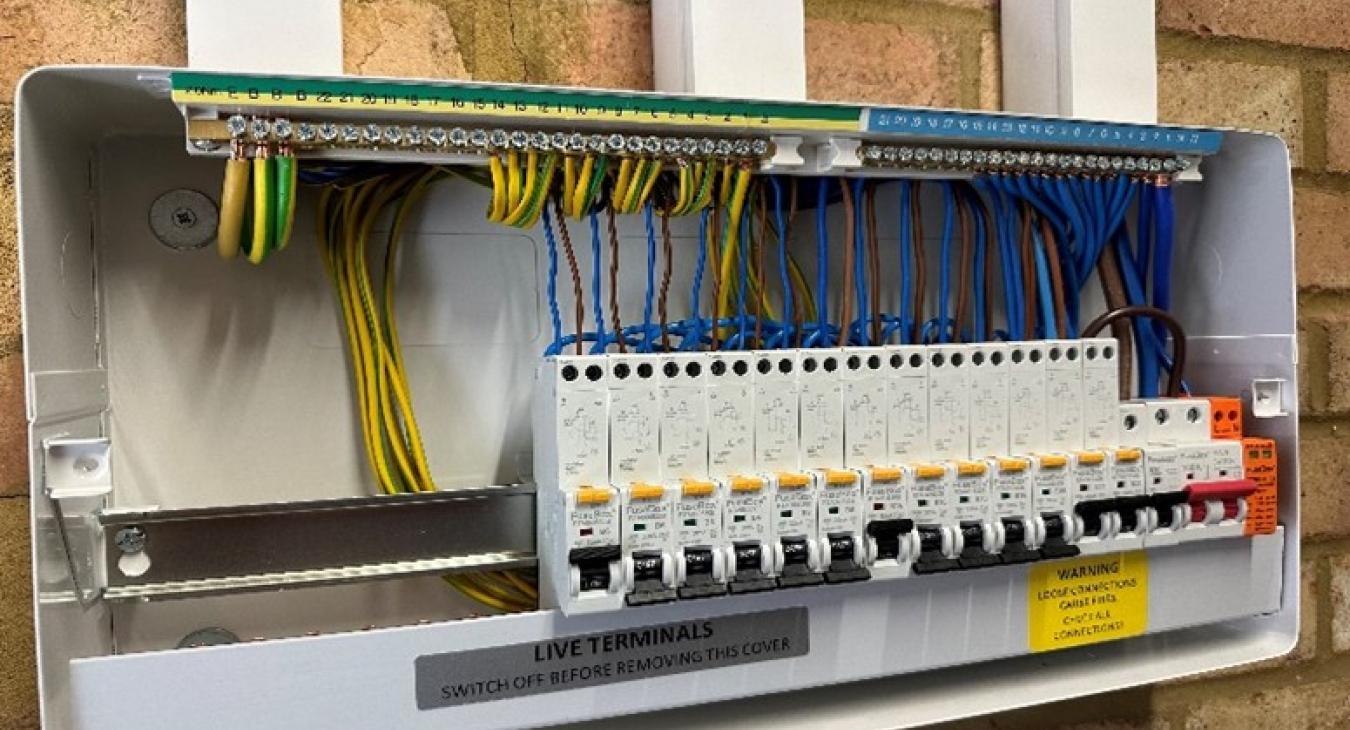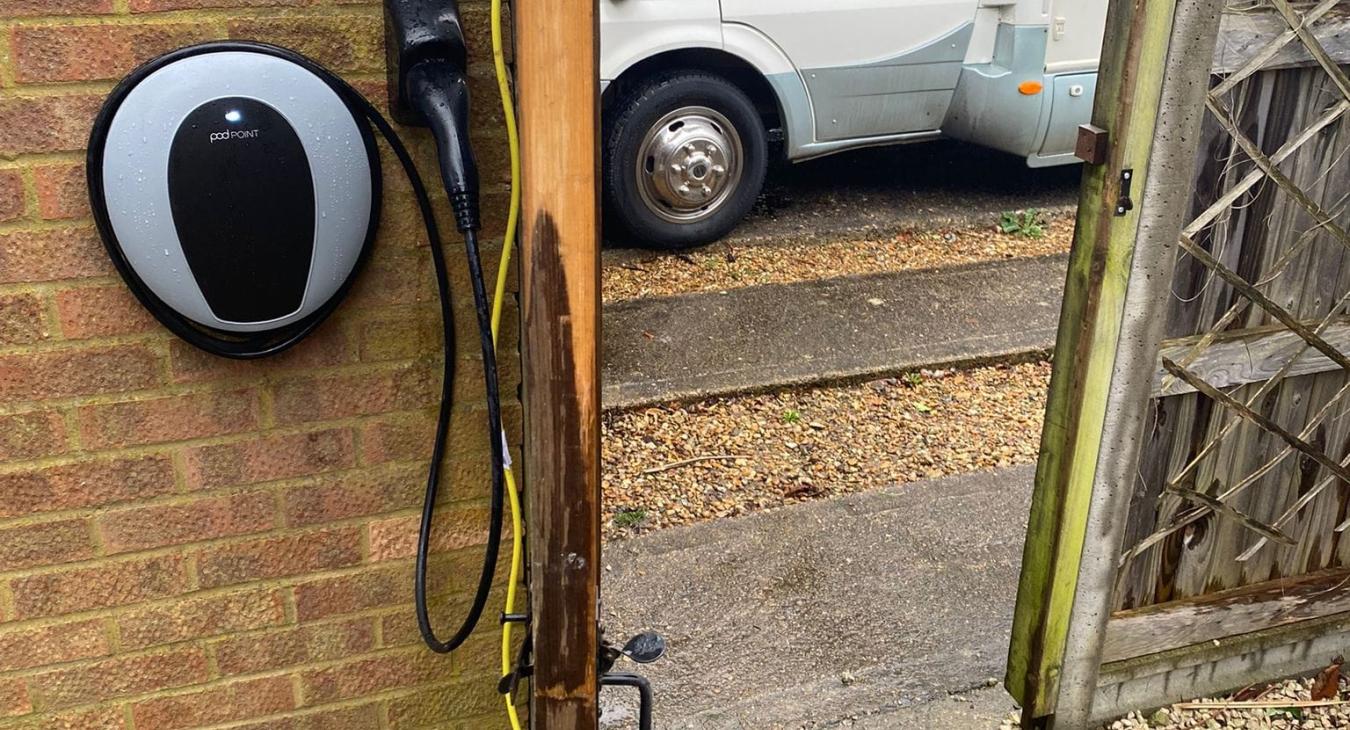
Have you got some questions about having your Bedford property's consumer unit replaced? NRG Electrical Installation Services are your local electrician in Bedford and in this blog we will guide you through the process.
Before replacing a consumer unit, it is worth noting that an old fuse box or earlier consumer unit is not illegal or dangerous, but industry standards are changing all the time, and an older fuse box is unlikely to meet the relevant standards today. As long as it is safe and the fuse box is still capable of meeting your energy needs, there is no need to worry about an upgrade. It could still be beneficial to replace it even if it is not a necessary requirement, consumer units have a lot better safety features than older fuseboards.
In this guide, we will cover:
1. The difference between a fuse box and a consumer unit
2. Signs to look out for that indicate you should replace it.
3. The process of replacing a consumer unit
4. The regulations that affect the job
5. Frequently asked questions about replacing a consumer unit.
WHAT IS THE BASIC DIFFERENCE BETWEEN A FUSE BOX AND A CONSUMER UNIT?
They are for all intents and purposes the same thing. They both have overcurrent/short circuit protection as a basic minimum, one uses fuse wire and the other a circuit breaker or MCB as they are sometimes referred to. A consumer unit is basically a modern version of the Fusebox.
That said, there are two, key differences.
When a fault occurs on a circuit which has a fuse/fuse wire as protection, the fuse/fuse wire blows or melts. The melted fuse breaks the circuit and disconnects the energy supply.
A consumer unit, on the other hand, uses circuit breakers. These are automatic protection devices that switch off a circuit if they detect a fault.
An MCB/Breaker can easily be reset, where as a Fuse/Fuse wire will require you to replace the fuse or rewire the carrier for that device, pretty annoying if you have no spare late at night and the freezer is beginning to defrost!
The second difference is the level of protection. Fuses take one or two seconds to break a circuit compared to a consumer unit which takes milliseconds – the length of time before the risk of electrical shock is present.
DO I NEED TO REPLACE MY CONSUMER UNIT?
A fuse box will only need replacing if it is dangerous or if you are adding additional sockets/lighting etc.
An EICR (Electrical installation condition report) or visual inspection conducted by a qualified Bedford electrician will be able to give you more of an idea if this is required.
However, we have drawn up a list of things to look out for and consider:
- You have a fuse box instead of a consumer unit: A fuse box is simply the older version of a consumer unit. The key difference is that a fuse box uses fuses instead of circuit breakers. Most fuse boxes are no longer compliant with safety standards or suitable for modern life.
- Your consumer unit is more than 10 years old: Regulations on electrical safety are changing all the time so there is a chance your unit isn’t compliant, especially if your adding additional points to your Bedford home. Whilst this may not be a reason to change it, it does mean that it may not be the safest option available to you.
- Your consumer unit does not have RCDs: Residual current devices are life-saving devices designed to protect against fatal electric shocks or fire. The IET regulations require most, if not all, circuits in domestic premises to be RCD protected.
- There is visible damage or deterioration on your unit.
- Your consumer unit keeps tripping: This could mean there is an underlying problem, and you may need to call a qualified electrician to ascertain this issue.
- Your lights are flickering, or your sockets are unresponsive.
- You are having major work done (e.g., a full-house rewiring).
If you notice one or more of these, it is a good idea to organise an inspection of your Bedford homes electrics. There is no harm in being cautious.
The fact is consumer units are a lot better at protecting us than their older counterparts. Not only are they designed using modern technology, but they are subject to updated industry standards which require further protective measures. Under the IET Wiring Regulations BS761:2022 AMD 2, new consumer units are required to:
- Be manufactured from non-combustible material: All new electrical installations must have a metal-clad consumer unit or metal-clad casing. The purpose of this is fire safety. Metal is better at containing a fire, minimising the spread of fire and removing any additional source of fuel for the fire (e.g., plastic).
- Have additional protection through a Residual Current Device (RCD): RCDs are specifically designed to protect people from electrical shock and are thousands of times more sensitive than circuit-breakers or fuses.
We still see a lot of homes in the Bedford area where the Fuse boxes do not have RCDs, and many are made from plastic or wood! An upgrade is therefore a long-term investment that will pay for itself in value.
WHAT DOES REPLACING A CONSUMER UNIT INVOLVE?
- Step one of the pre-replacement is a visual inspection. This is a basic check of your house to establish the overall condition of your existing installation and identify any visible signs of damage.
- Next is an inspection of your earthing and bonding arrangements, as well as your meter tails. The aim is to make sure they comply with the relevant regulations. If they do not or are unsafe in any way, the job cannot go ahead straight away and remedial work will be required.
- On top of this, an electrician should ideally conduct an EICR or a pre-Consumer unit inspection and testing during this stage. This will highlight any issues that could not be identified during a visual check and establish the urgency of any problems.
- If the inspections turn up any faults that will impact the functioning of the new consumer unit, these must be fixed before the replacement can go ahead. This brings us to the last step of the pre-replacement – remedial work. This could be minor or major tasks and an electrician will discuss the cost and process with you.
Once all the above are complete your chosen Bedford based Electrician can then proceed to replace your fuseboard/consumer unit. Upon completion of this install they will then conduct further testing to ensure there are no issues and results marked down on the certificate.
Finally, you will receive an Electrical Installation Certificate and Building Regulations Compliance Certificate as evidence the work is compliant.
ARE THERE ANY REGULATIONS I SHOULD KNOW ABOUT WHEN REPLACING A CONSUMER UNIT?
Under Part P of the Electrical Safety Building Regulations (for England and Wales), the replacement of a consumer unit is notifiable work. This means you either must tell your local authority building control about the work (before it starts) or hire a Bedford electrician who is registered with a government-approved Part P scheme like an NICEIC domestic installer.
It also means that you need:
- An Electrical Installation Certificate to confirm that the work meets the IET Wiring Regulations
- A Building Regulations Compliance Certificate to confirm that the work meets the Electrical Safety Building Regulations
The benefit of hiring a Bedford Part P-registered electrician – aside from experience and credibility – is that they can self-certify the work and provide you with the necessary certificates at the end of the job.
Failure to certify your installation and obtain the necessary documents can result in the local authority forcing you to have the work removed or altered, as well as a hefty fine.
FREQUENTLY ASKED QUESTIONS
Below we cover some of the frequently asked questions about having your Bedford home's fuse box replaced with a consumer unit or your consumer unit replaced with a new one.
Can I change my consumer unit myself?
Only a Competent Qualified person should conduct this task, it is not recommended that someone without the correct skills and knowledge to do so. A registered electrician is required to make sure the work meets the necessary standards.
How long does it take to change a consumer unit?
It varies depending on the specifications of the job. A standard replacement with little to no remedial work takes between four and eight hours on average. This includes tests and fault-finding.
Will I have power during a consumer unit replacement?
No, your power will be switched off for the duration of the job.
Do I need to contact my energy supplier before replacing my consumer unit?
That depends on if you have an isolator or not. If you do, your electrician will be able to isolate your electricity supply from your end. If not, you will need to contact your supplier to switch off your electricity while the work is underway.
We hope that has helped to answer your questions about replacing the consumer unit at your Bedford home. If you need more information or would like to arrange a consumer unit replacement, contact NRG Electrical Installation Services today.










